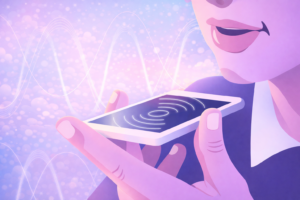Let’s take a look at some common, everyday tech myths and learn about the truth behind them.
I’ll be honest, before I wrote this article, I even believed in one of these, which shows how widespread they are.
1. Incognito mode hides all your online activity
This one is a very common myth, although it is slowly being eradicated in the masses.
People believe that once they enter Incognito or Private mode in their browser, they become invisible. Stealth mode activated. That’s not the case.
When you’re in incognito mode, your history isn’t saved. Your cookies and site data are likewise not saved along with any form data that you input.
However, this doesn’t mean that you become invisible. Your ISP, your employers/school, and the websites you visit do record your activity.
It even says so in the fine print in Google Chrome:
To sum it up,
- The myth: Incognito mode makes you completely invisible.
- The reality: It just stops your data from being saved in your browser. Your ISP, employer, school, and the websites you visit are aware of your activity.
2. Apple products are completely immune to viruses and malware
One of the major selling points of Apple devices is how secure they are. While it is true that they are secure, we enter into the realm of myth if we say that they are completely immune to viruses and malware.
Apple devices tend to be more secure as they have tight regulations on the apps and software that can be downloaded on them.
While Android gives users pretty much a free hand, this isn’t the case with iOS. Apple also releases regular updates for its devices, catching and fixing security issues before they are exploited.
This doesn’t mean, however, that they are completely safe from cyber threats. As is the case with every internet-enabled electronic device, you have to remain cautious.
You have to be careful about the sites you visit and the links you click on, etc.
In recent history, the instance of the Pegasus spyware serves to show us that iPhones and other Apple devices can be exploited, even if the occurrences are rarer.
From the website, Darkreading.com, the following information can be found:
Researchers from iVerify discovered multiple devices compromised by Israeli company NSO Group’s spyware via attacks initiated between 2021 and 2023 that affect Apple iPhone iOS versions 14, 15, and 16.6, as well as Android, they revealed in a blog post published on Dec. 4.
To sum it up,
- The rumour: Apple products cannot be attacked by malware and viruses.
- The fact is: Although being safer, Apple devices fall under attacks of these threats as well. There is a need to be careful on the internet and conduct frequent security checkups.
3. Keeping your battery plugged in after it reaches 100% damages the battery
This myth is one of the difficult ones to eradicate, as it rises from a partially true but old phenomenon.
In older batteries, such as nickel-cadmium or nickel-metal hydride, there was the problem of “battery memory.” If the battery was recharged without being properly drained first, it would “remember” the cycle and then drain quickly over time.
Nevertheless, these batteries are not commonly in use now. Rather, lithium-ion batteries are applied in phones and laptops. Such batteries are not actually destroyed because of overcharging.
Of course, in debunking this myth, we’re not saying that you should keep your device plugged in all the time.
Even if the “overcharging” doesn’t damage the battery, the heat it generates can be a deteriorating factor.
To sum it up,
- The myth: Keeping your battery plugged in after 100% can cause it to melt or get mangled.
- The truth: Nothing happens if you occasionally let your Li-ion batteries stay plugged in after 100%.
4. Better resolution = better display
This myth is similar to the notion that most people have in terms of camera power. Many people think that a higher number of megapixels means higher camera quality, when that is not the case.
There are many other features and factors that play a role in the camera quality, including the sensor size, image processing algorithms, etc.
In the same way, many people believe that a better resolution equals a better display.
As is the case with camera quality, there is more than one factor that decides the quality of the display.
The panel type, refresh rate, colors supported, etc., all decide how crisp and aesthetic the screen appears.
For example, a 1080p AMOLED display with a 120Hz refresh rate and a 1 billion color gamut would be better than a 1440p IPS display with a 60Hz refresh rate and a 16.7 million color gamut.
Just because the resolution is higher doesn’t mean the display is better.
To sum it up,
- The myth: A higher number of pixels on the screen means the display is better.
- The reality: There are a lot of other factors that can affect the display, and it is not completely reliant on the resolution.
5. Your IP address is hidden, and so are you
Many people tend to believe that their IP address is hidden online and is not visible to anyone. They also believe that even if the IP has to be discovered, it does not reveal personal information related to them.
The first part of the myth, i.e., the visibility of the IP address, is not true at all. Your IP address is not completely hidden.
It is shown on the websites you visit. It is used as your identifier when you perform any activities in the online world. The notion of the IP address being hidden is incorrect.
Secondly, although your IP address doesn’t reveal exact information about the particular user, it can still be used to find various types of general data.
For example, an IP location tool can be used to find the general location of the IP address, which is discovered by the ISP servers.
Usually, IP location finders are used by the users themselves to find their location coordinates. However, they do serve to illustrate how IP addresses are not as invisible as some people may think.
The best way to be safe about your IP is to use a VPN. VPN services mask your IP address, so that it is replaced with a different one when you access the internet.
However, even in this situation, the IP is not hidden; it is simply replaced.
To sum it up,
- The myth: The IP address is safe and hidden, and cannot be used to find information about the user.
- The reality: The IP address can be seen by the websites you visit. It can be used to find the general location of your device by tracking the ISP servers.
6. Turning on Location services makes you instantly visible online
This myth is something I used to believe in personally until recently. I used to think, like others who share this belief, that as soon as the location settings on my phone were turned on, I would become a blinking red light on a hacker’s radar.
The location service, when enabled, doesn’t automatically start shooting your device’s coordinates in the digital ecosystem.
Rather, only the apps/websites that are cleared to use your location can access it. It is always safer to keep the settings turned off when you’re not using them, but if they are on, you won’t automatically be in mortal danger.
To sum it up,
- The myth: Turning on location services instantly makes your exact coordinates vulnerable and accessible online.
- The reality: Only the apps and websites you authorize can use your location.
Conclusion
And there you have it.
In this post, we’ve covered various tech myths that people tend to believe in, but are completely wrong. If you found one in this list that you yourself believe in, well, now is the time to let go of it.
We hope you had fun reading this post and that you learned a thing or two.








